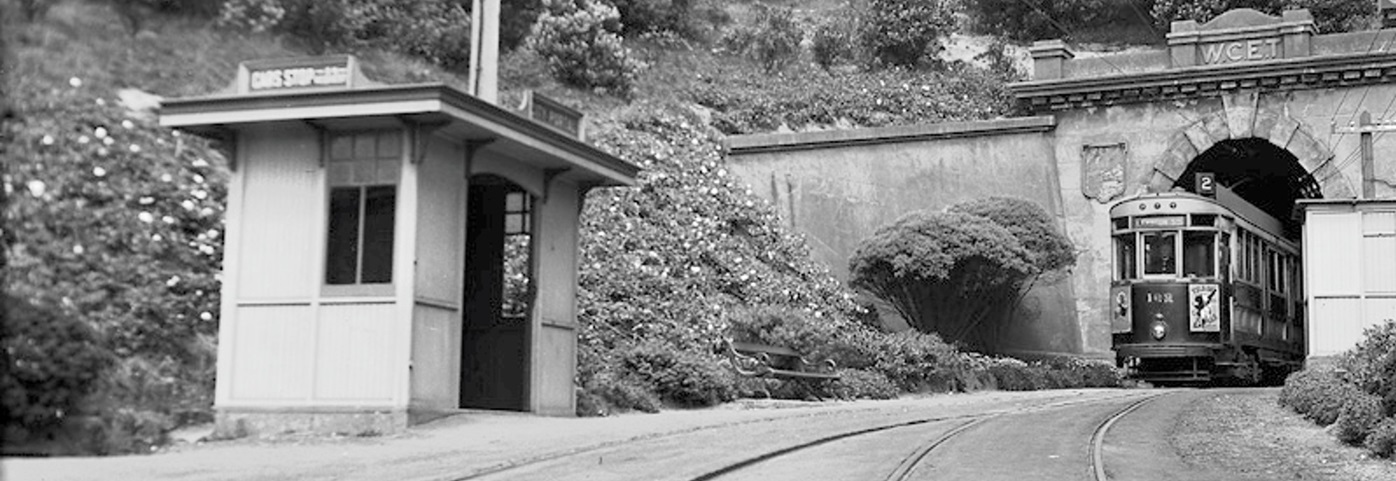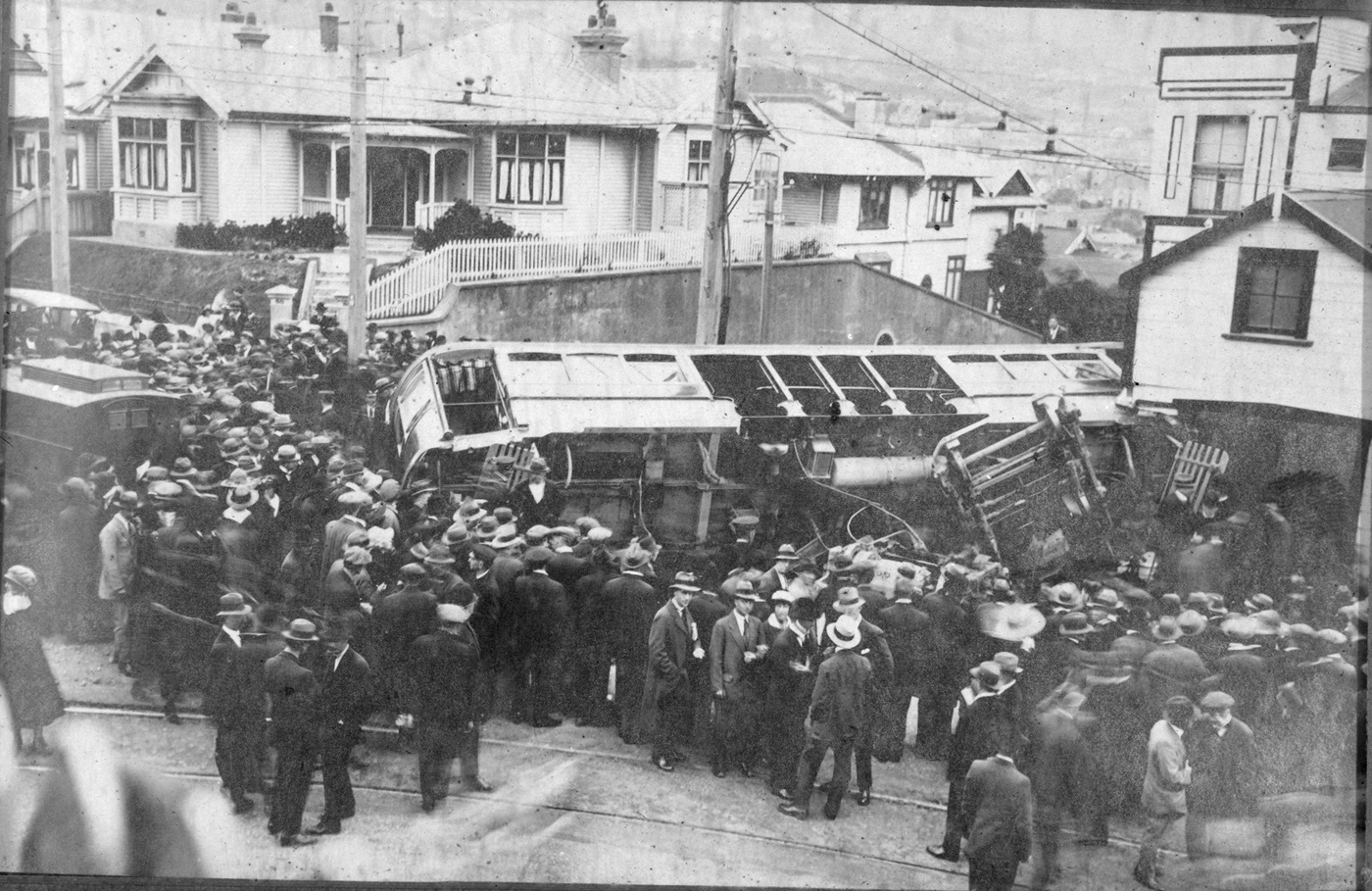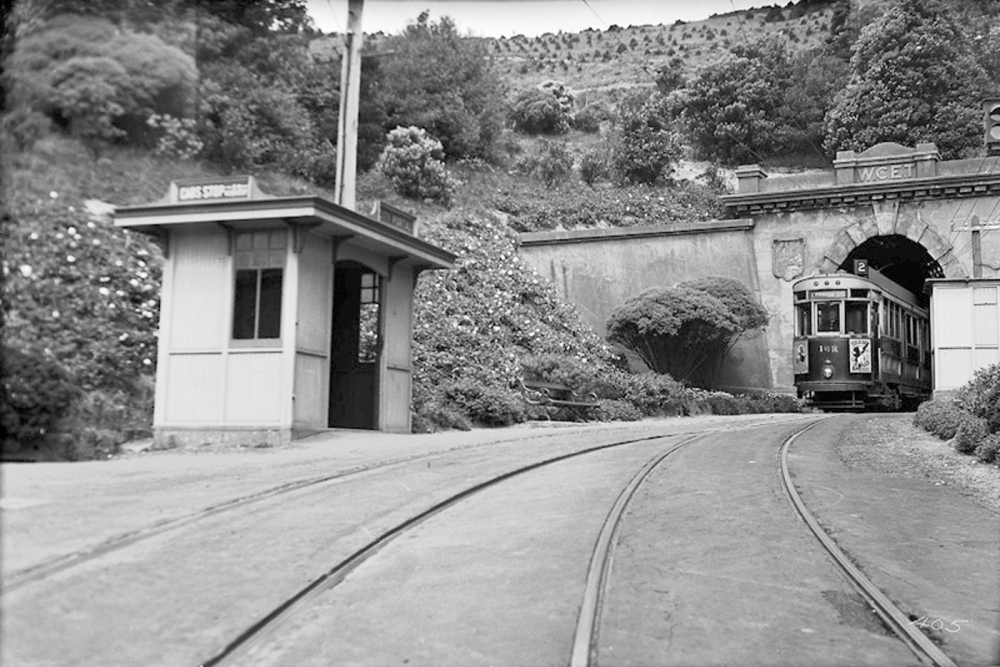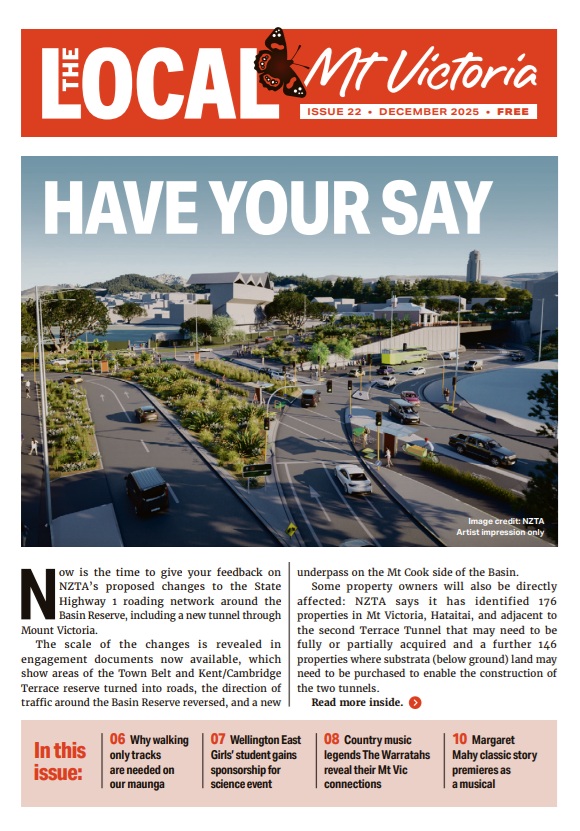
Trams used to rattle through the streets of Mt Victoria, as Joanna Newman from the Mt Victoria Historical Society explains.
Last month, The Local featured an article about airport buses. They might barrel down Pirie Street more numerous and heavier than ever (along with hundreds of other buses every day), but they still use a tunnel built nearly 120 years ago for trams.

Lambton Station-bound tramcar No. 162 emerging from the City portal, circa 1935 (Wellington City Archives)
In 1907, the Kilbirnie tram tunnel – which most people would now think of as the Hataitai bus tunnel - opened.
It gave access to the eastern suburbs and, needless to say, the developers subdividing the northern part of Kilbirnie (now known as Hataitai after the Hataitai Land Company) were keen to be involved; so keen, in fact, that they paid nearly half the total cost of construction. The Mayor of Wellington turned the first sod in October 1905. Many landowners in Elizabeth, Brougham and Pirie Streets gave up land for road widening because the trams could not negotiate the tight corners of the narrow streets.
In the days of the trams, it was the motormen and conductors who kept the service running. Unfortunately, the skills of the Tramways staff were not always enough to deliver their passengers safely to their destination. In 1920, a terrible accident occurred in Pirie Street, when a runaway tram crashed into a house at the intersection with Brougham Street. The motorman had died at the wheel and two passengers died with him when the tram ran out of control. This incident led to the installation of the device known as the “Dead Man’s Handle” on trams, to automatically cut off the power and apply the brakes if the driver was incapacitated.

Runaway tramcar accident, Pirie Street, 1920s (Wellington City Archives)
In 1961, one Mt Victoria teenager, who was a keen supporter of Wellington’s Save the Trams campaign, harboured an ambition to drive a tram.
As a sixth former at Wellington East Girls’ College, she sometimes used her lunch-pass privilege to take the tram to a favourite bakery in Hataitai. One week, the driver of the tram was someone that she and a friend knew a little, so they asked the driver if they could be at the controls in the darkness of the tunnel the next day – and he agreed! When they were nearly back at the Pirie Street entrance, she went to step aside so that the driver could take over but he indicated that she could stay where she was. The tram emerged into the full light of day with a 16-year old schoolgirl in Wellington East uniform at the controls. “The enormity of what we had done, and the possible repercussions, especially for the driver, did not sink in until some time later.” The following year, in late 1962, she was a passenger on the last tram to go through the Hataitai tunnel.
Trams have now been replaced by buses, of course. The tunnel, however, is still key to Wellington’s public transport system. It also still has a strange fascination; its beautifully-framed, dark ellipsis with the pinhole of light at the end both enticing and threatening.
OTHER STORIES




